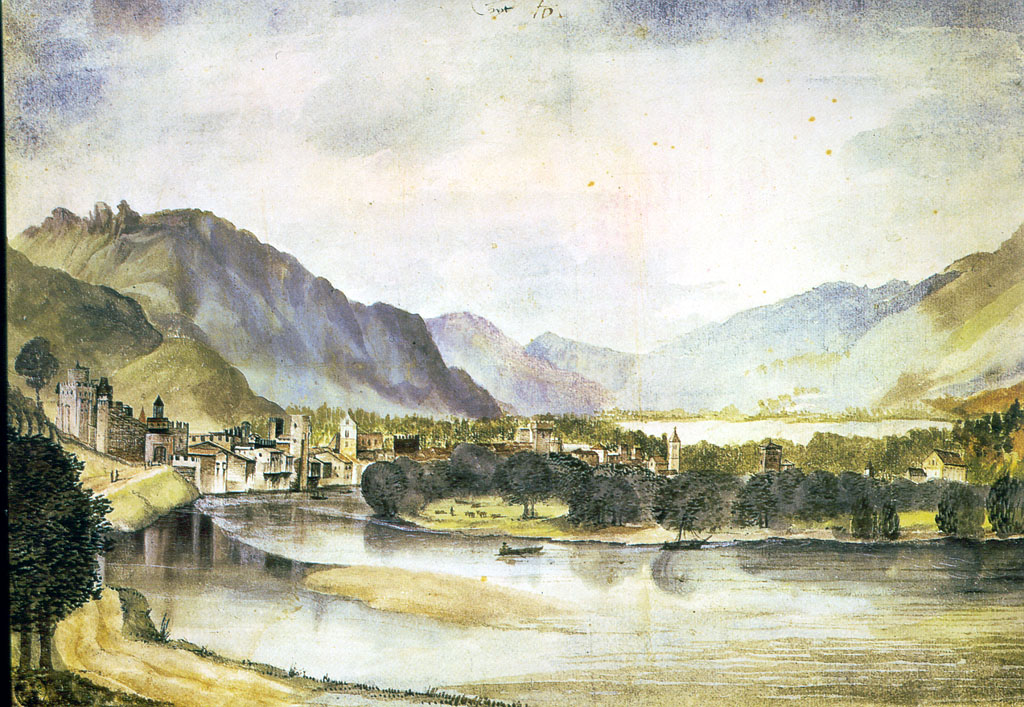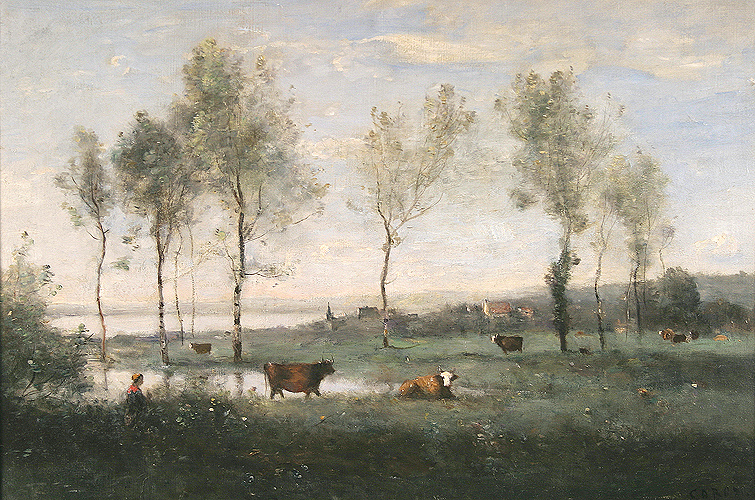Project 2 Landscape
Research Point – Artists who use landscape as their main subject
Albrecht Durer (1471-1528) was not on my list of artists that I recognise as a landscape painter- so as one of the earliest to use landscapes in his work I researched a little into his studies in watercolour and ink: His ‘View of Trento, Watercolour and gouache on paper (1494) was a lovely study where he has simplified the trees and mountains – which maybe useful for me drawing the Andes mountains near where I live. He has a very clear Foreground, middleground and background.

The other work I picked out was his ‘View of Innsbruck’ Watercolour on paper (1495)
I liked this watercolour because of its simplified clouds, and reflections in the water – very cleverly and delicately painted!
My HERO of landscape painting has always been John Constable ((1776-1837) evr since I saw his ‘The Hay Wain’ at the National Gallery at the age of 14. I loved the immense detail of his paintings, the small details such as shepherds and people going about their rural business. Small touches of red in perhaps a coat or a cart, birds flying in the sky, wonderful cloud detail, wind rain and storm also starred in his awesome landscapes. John Virtue in his tour of the National Gallery was also impressed by Constable’s bold courageous brushstrokes.

Constable made several studies of this view of ‘Dedham from Langham’. In both versions above there are very clear Foreground, Middleground and Background elements. I believe that he was a master of simplification of the landscapein what were landscapes ahead of their time…such as ‘Summer, Afternoon after a shower’ Oil on Canvas (1828) and ‘A rain storm over the sea’ Oil on canvas (1834).
Jean Camille Baptiste Corot (1796-1875) is another landscape artist that I deeply admire. Some of his delicate drawings of trees are a joy and I love the details of people and animals strategically placed within his landscapes. Examples are ‘Lanscape with three figures’ Oil on canvas (1850-60) and ‘Pastures in the Marais’ Oil on canvas (1865-70.

I made a couple of small copies in pencil of these paintings:
About 7-8 years ago I was lucky to be able to visit the Lowry Centre in Manchester. From this visit I obtained a book which I subsequently read on the life and works of Lowry by Shelley Rhohde. LS Lowry (1887-1976) like George Shaw painted and sketched the life and scenes around him – but unlike Shaw, Lowry formed his own style of painting (not realistic) – at the time not recognised as a serious painter he did not achieve success from his work until the latter part of his life. He painted the monotonous life of the worker going to and from the factories – ‘Our town’ Oil on Canvas (1943) and the daily life of for instance ‘An arrest’ Oil on canvas (1927):
Among his more emotional paintings, I really admired his ‘The Lake’ Oil on Canvas (1937) part of his black series – painted after the death of his father. The image below does not do justice to the real painting:

A painting about death…human death in the graveyard (foreground detail), the dark and polluted lake (middleground) and the death creating factories in the backgound belching out black smoke. This image is very similar to that on P62 of the course – Drawing by James Lloyd.
In my sketchbook studies to follow, I want to have in mind the studies of Corot and Constable and look for little details in the landscape that could bring life and realism to my drawings.







